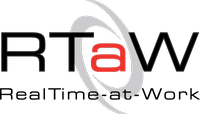Ethernet TSN (Time-Sensitive Networking) is transforming the landscape of automotive and industrial communications.. TSN is essentially a ‘toolbox’ of over 15 protocols built on Ethernet, including an expanding set of Quality-of-Service (QoS) mechanisms like the ‘Credit-Based Shaper’ (IEEE802.1Qav), the ‘Time-Aware Shaper’ (IEEE802.1Qbv) and the ‘Asynchronous Traffic Shaper’ (IEEE802.1Qcr), which offer capabilities far beyond basic traffic class priorities and VLANs.
While TSN provides powerful solutions for meeting the diverse real-time and safety requirements in automotive and industrial communications, it also introduces several key challenges::
Topology of a production cell with two interconnected machines and an automotive TSN network
Prerequisites: this training is designed for engineers with a basic understanding of real-time communication (e.g., CAN networks) and Switched Ethernet networks. No prior experience with TSN or performance evaluation and modeling tools is required.
The training is offered in various formats, including 8 sessions of 3 hours each via Webex or a 3-day on-site workshop at your office.
Detailed training content and sample materials are available upon request. The training is offered in English, German, French, Italian, or Chinese. Please contact us for more information.
To address these questions, drawing from RTaW’s extensive experience in designing TSN networks with leading automotive and aerospace OEMs, as well as our active role in TSN standardization—RTaW staff served as editor of the TSN standard (IEEE P802.1Qcw) and secretary of the aerospace profile standard (IEEE P802.DP)—we now offer a comprehensive TSN training with the following objectives:

